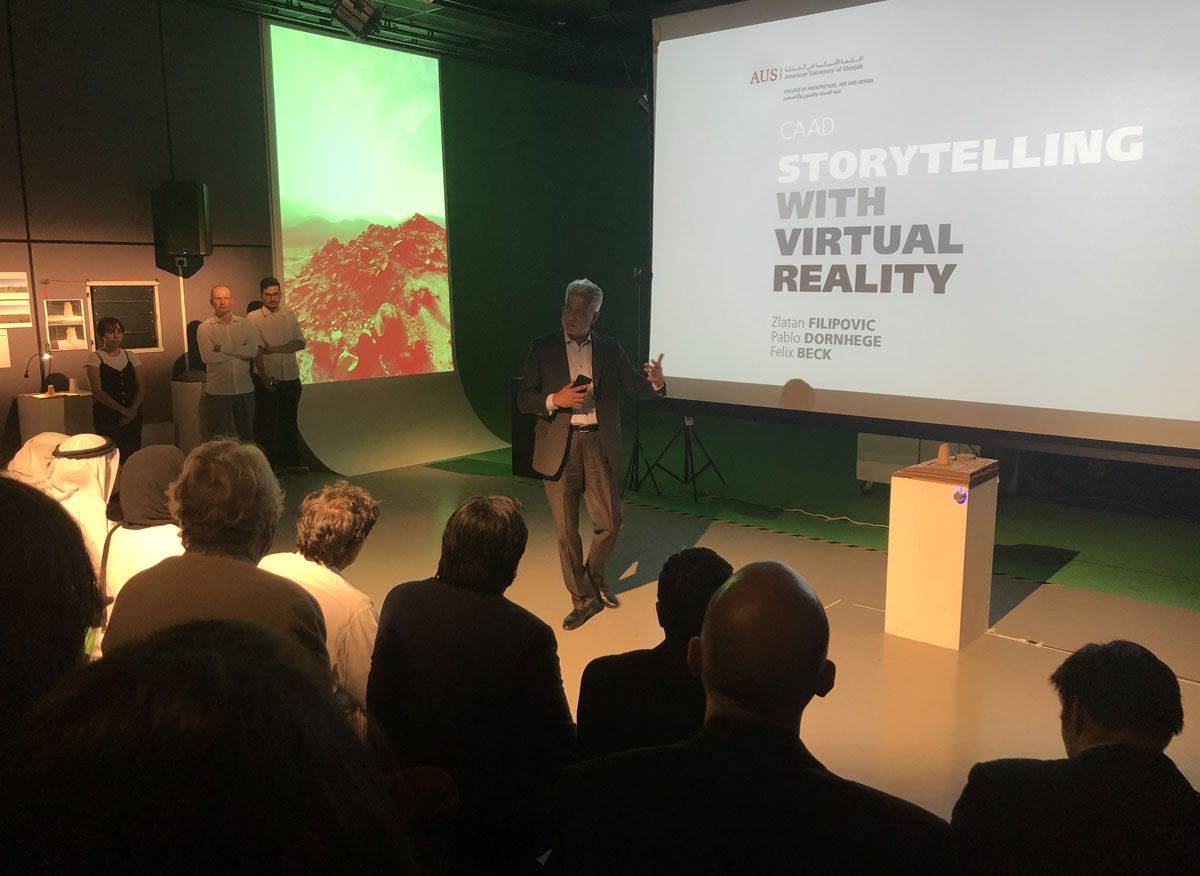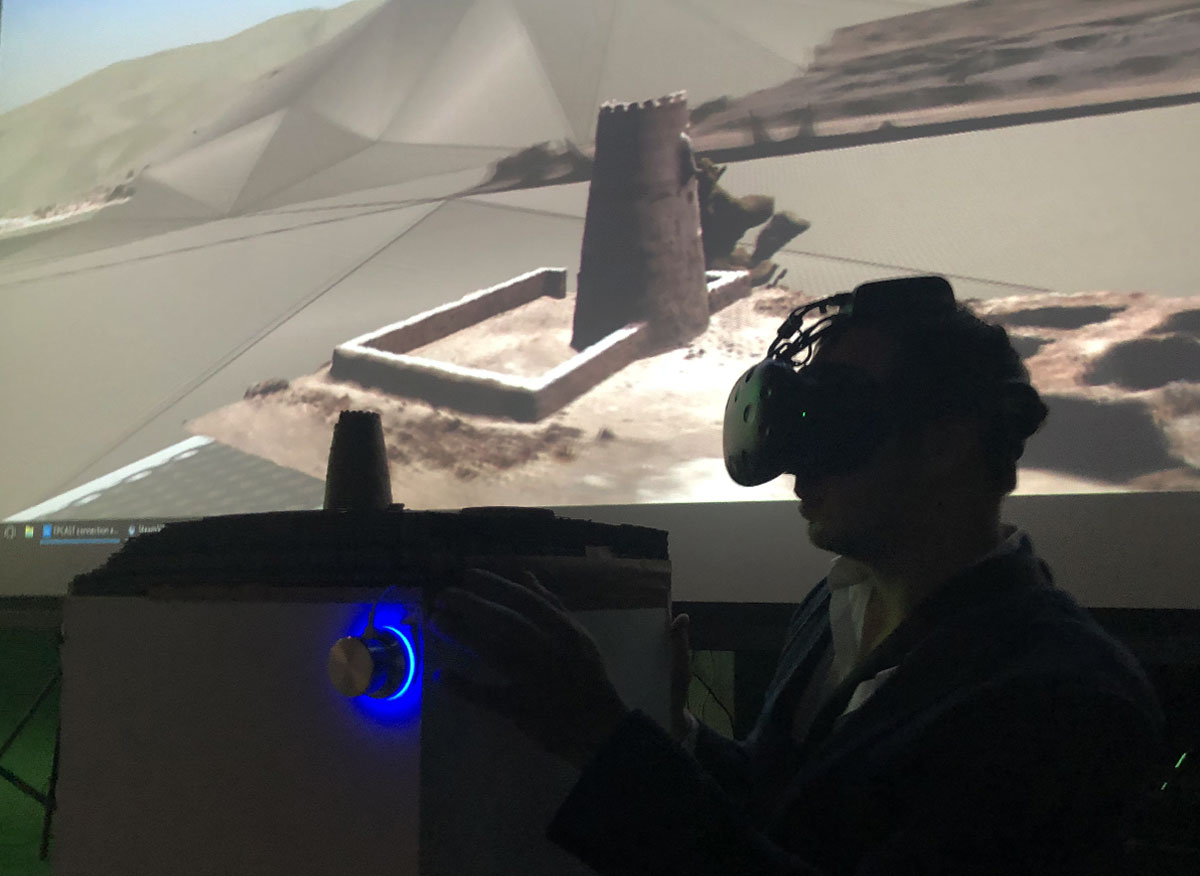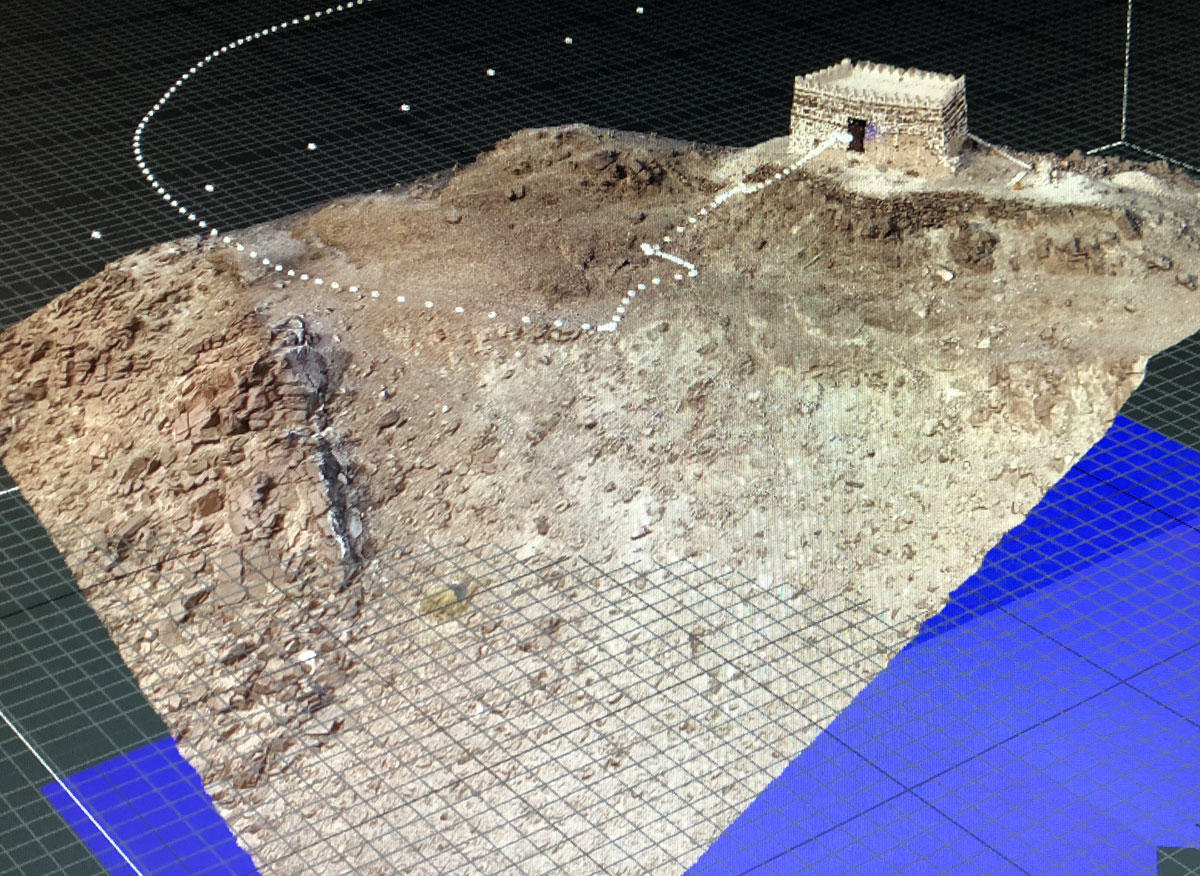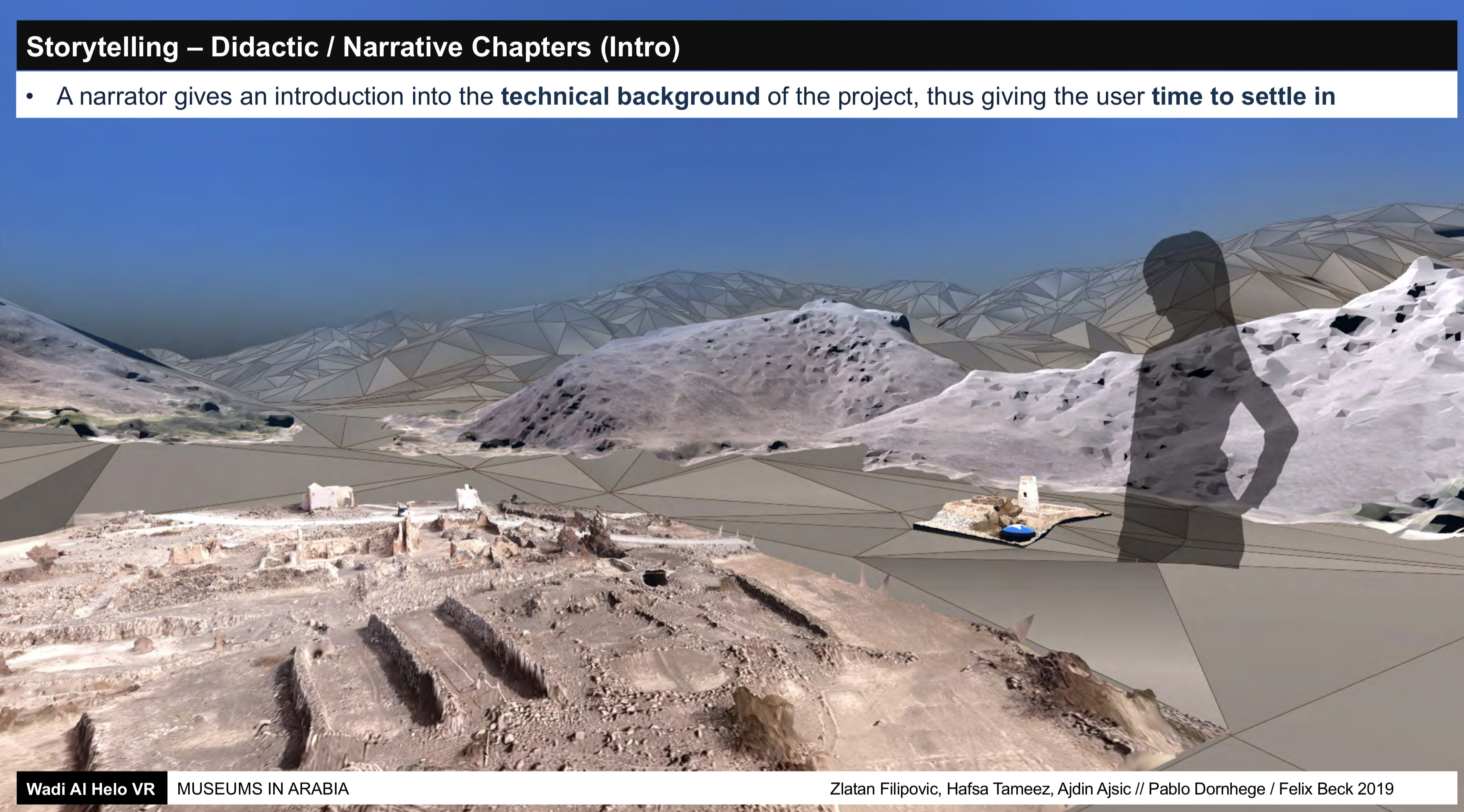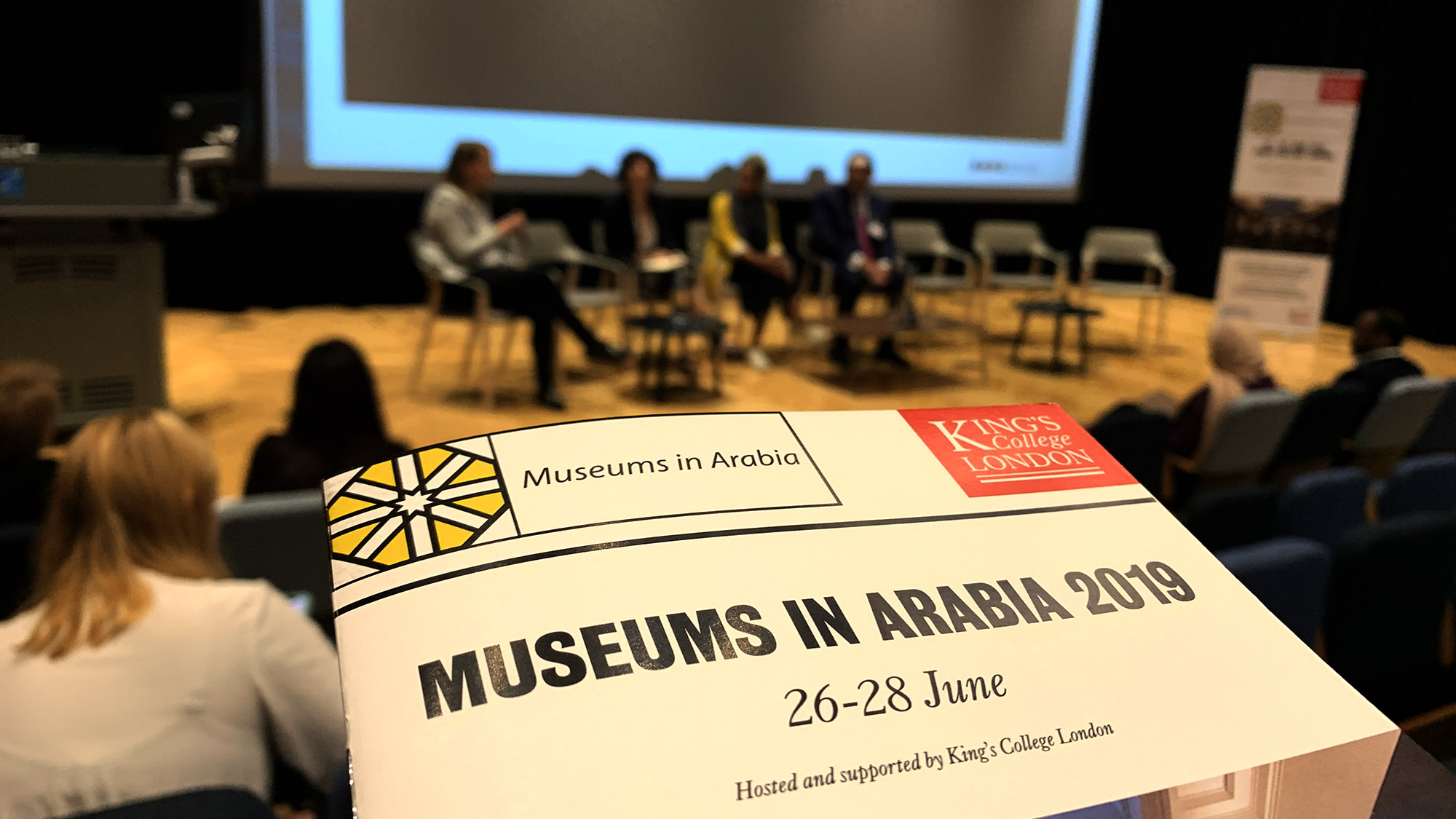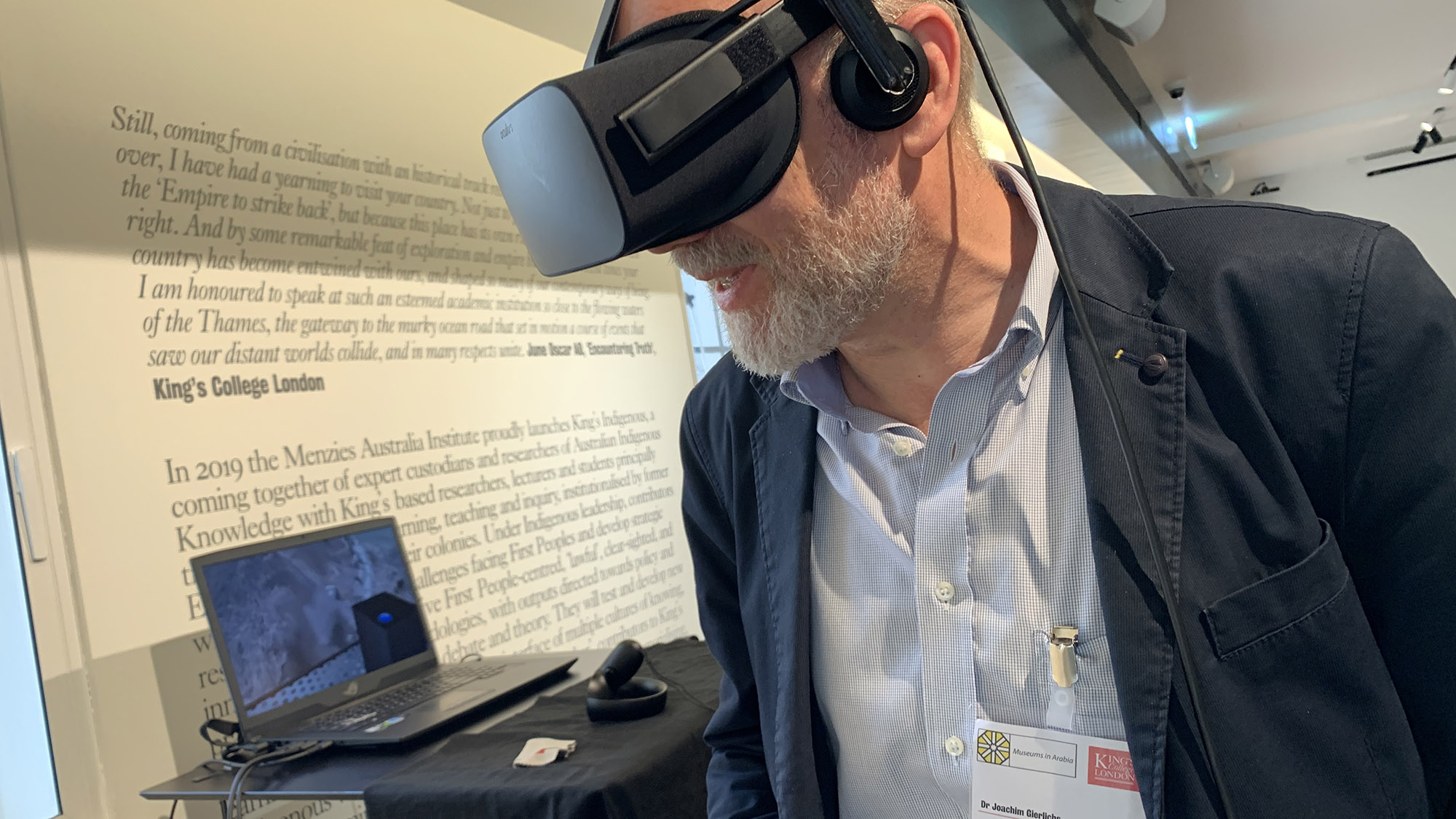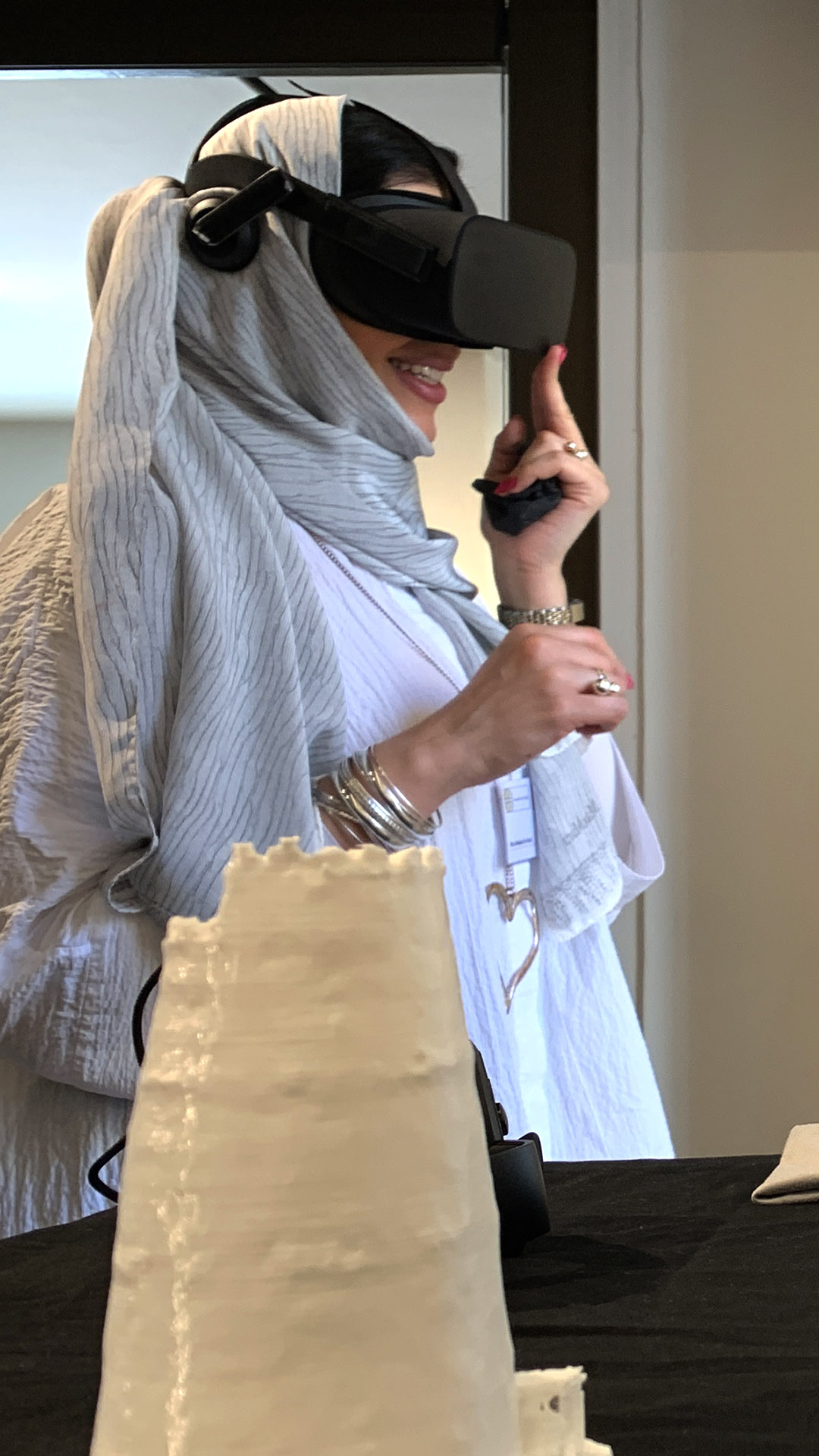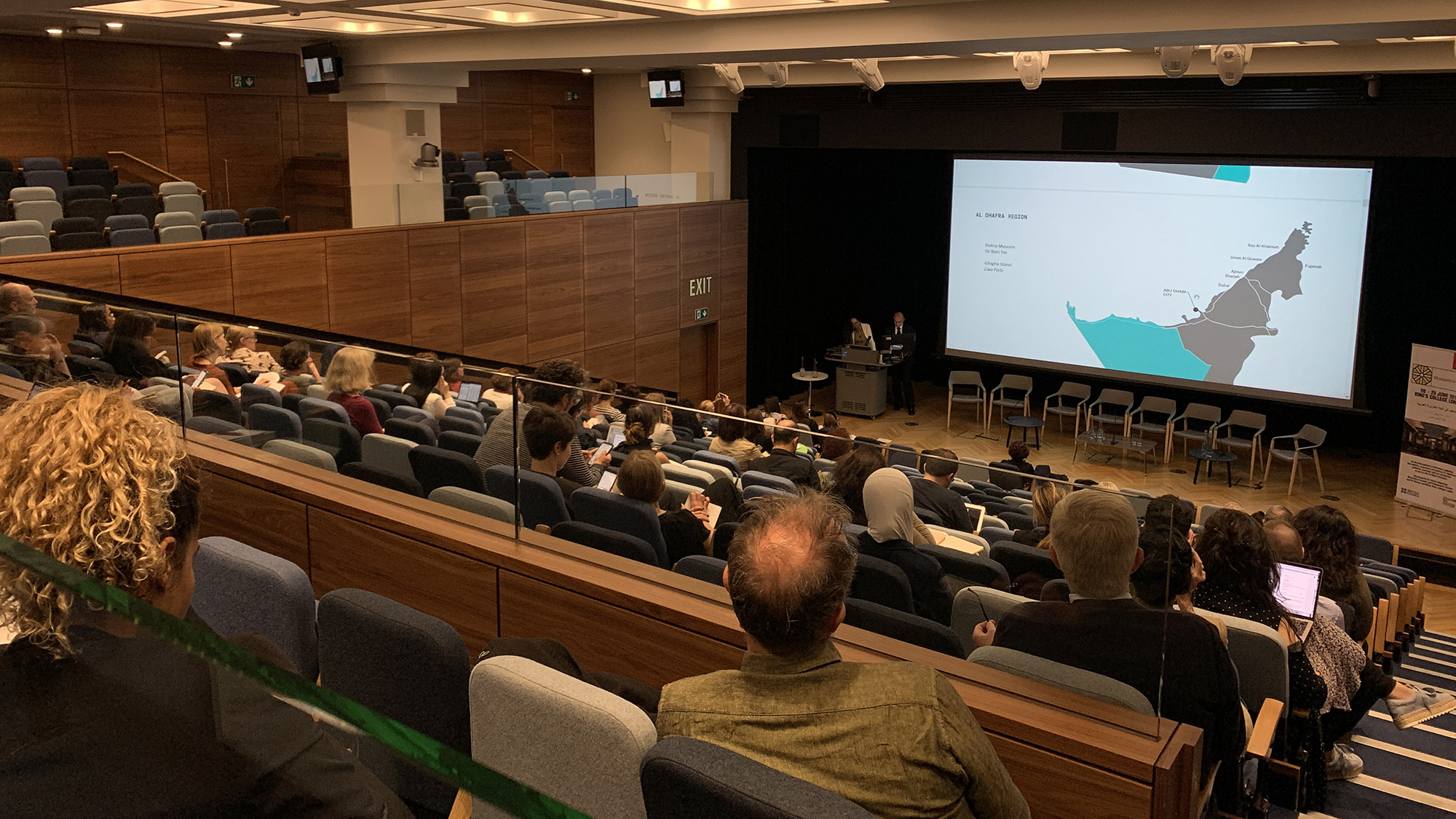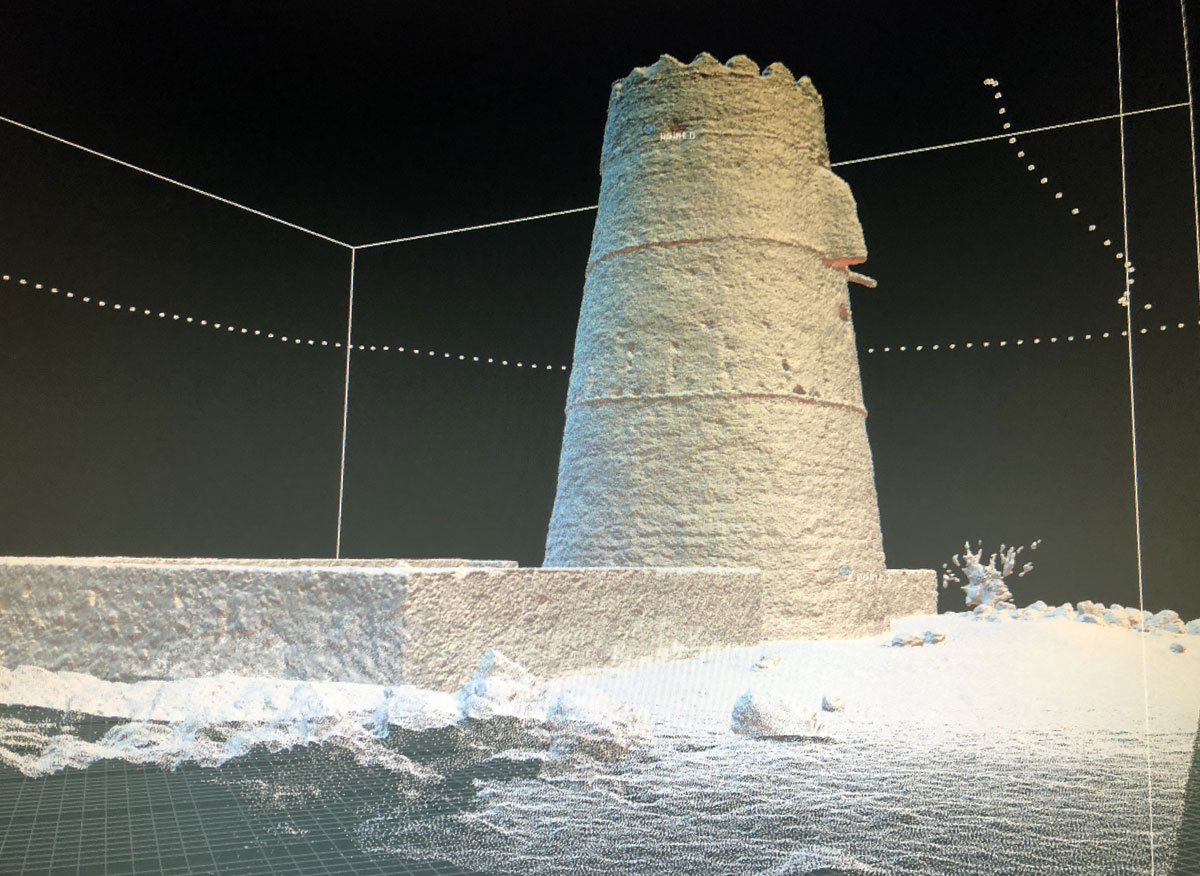
Wadi al Helo, arabic for sweet valley, is located in the eastern area of the Emirate of Sharjah. The valley with its historic village and several watchtowers plays an important role in the history of the Emirate, and as a cultural heritage site for the whole United Arab Emirates. As part of ‘Sharjah’s Gateway to Trucial States’ project (SGTS) the site is part of Sharjah’s bid to be included with seven more emirate cultural heritage sites on the prestigious list of World Heritage Sites by UNESCO.
The Wadi Al Helo project is a collaborative research project between the American University of Sharjah (College of Architecture, Art and Design), University of the Arts Berlin (Germany), and New York Universities NTSI Lab initiated by Prof. Zlatan Filipovic with the goal to develop several installations that feature the stories of the valley using different media, and to support Sharjah’s SGTS project.
Storytelling with Virtual Reality: A virtual reality (VR) application was developed by Zlatan Filipovic (AUS), Pablo Dornhege (UdK), and Felix H. Beck (NYUAD) from June–September 2018 and presented on September 25 (6–8pm) at the American University of Sharjah (Media studio: AD1-104, Small gallery: AD1-101). The showcased framework supports immersive storytelling about Wadi al Helo, featuring several historic watchtowers, the archaeological remains of a village, and the wadi itself protected by surrounding mountains. “A significant example of a naturally protected agricultural valley within mountains. It is reached through a riverbed or valley, along the caravan route, with watchtowers located at the entrance of the valley to protect from raiders. It was safe territory, allowing people to work in agriculture and export their products to coastal areas.”
